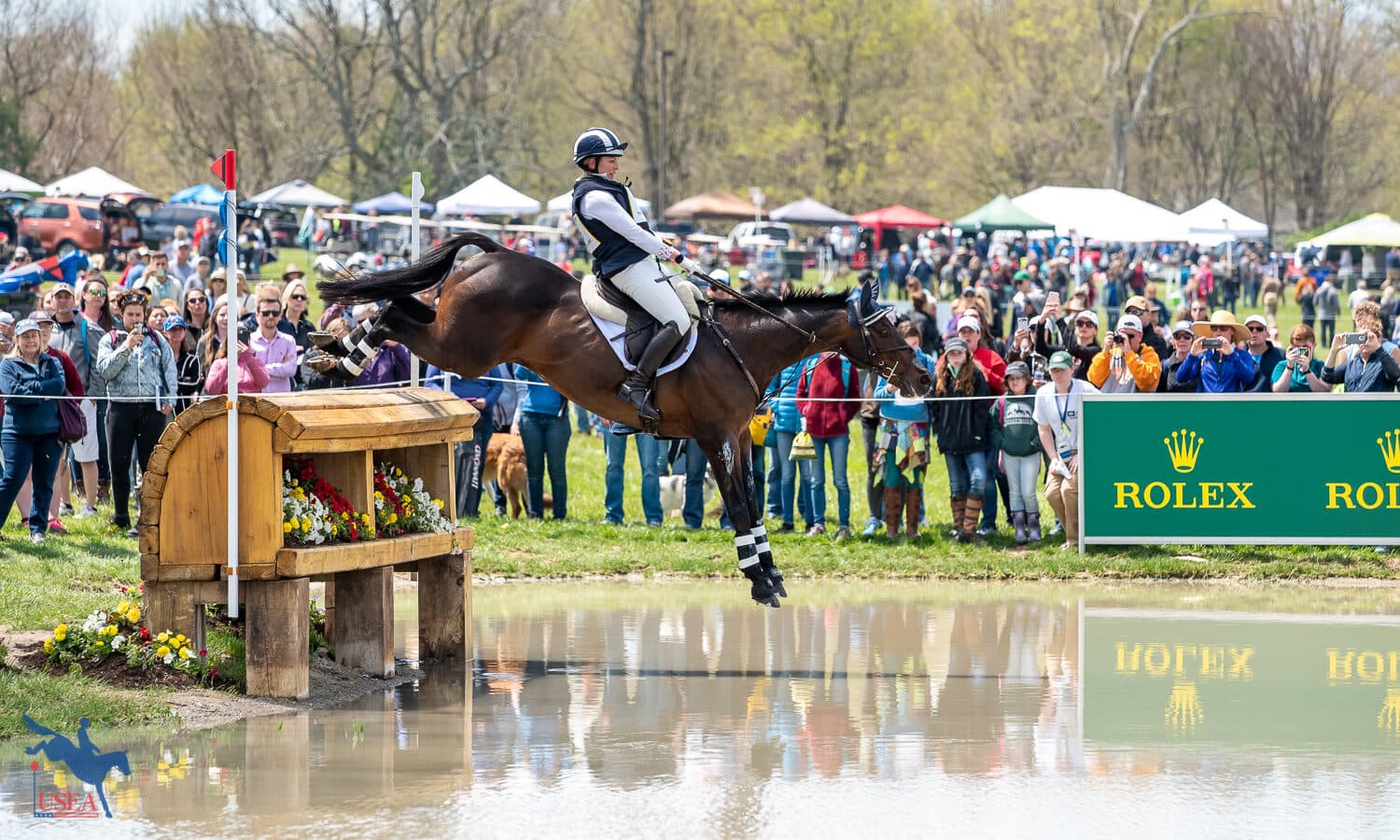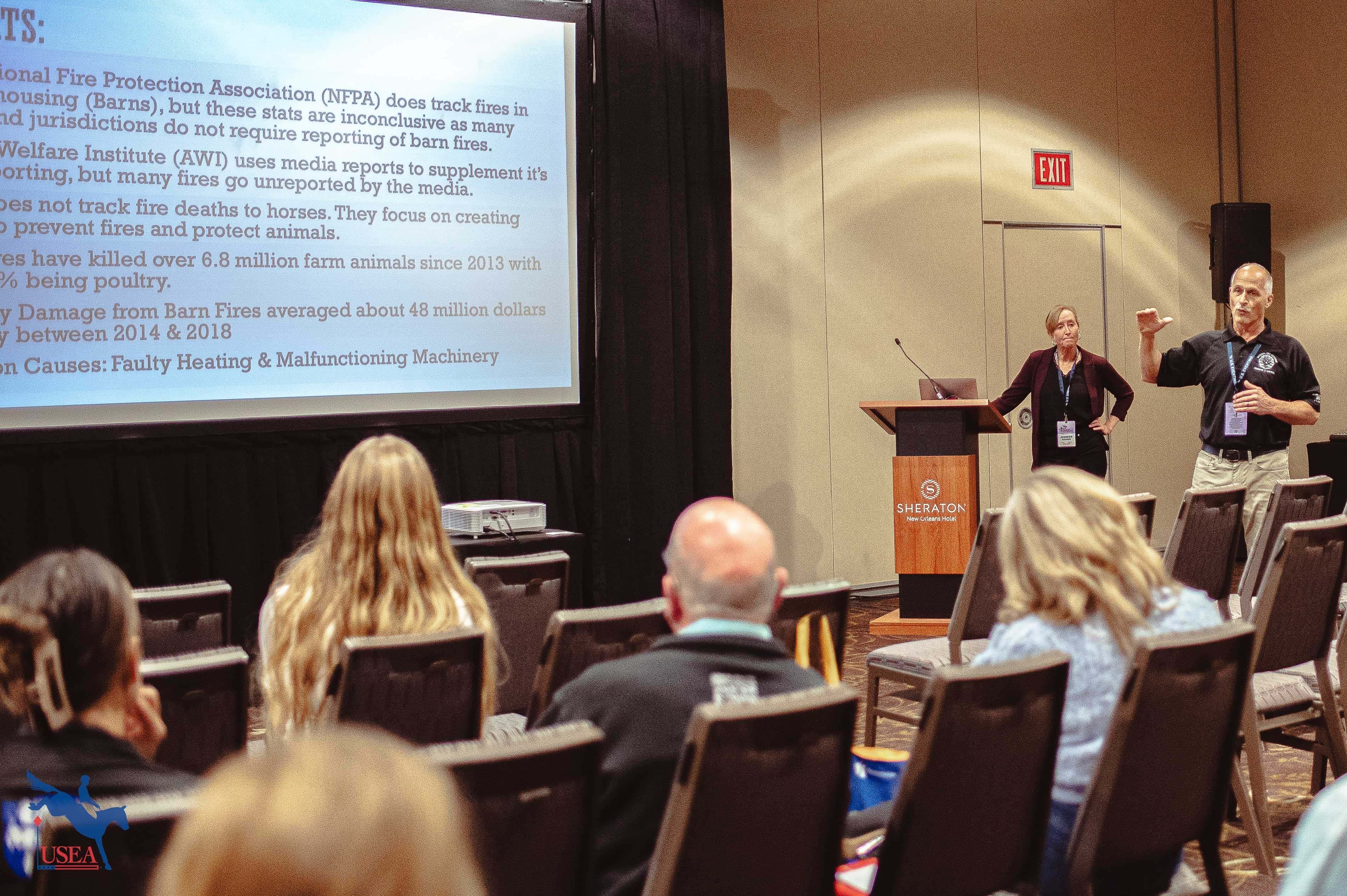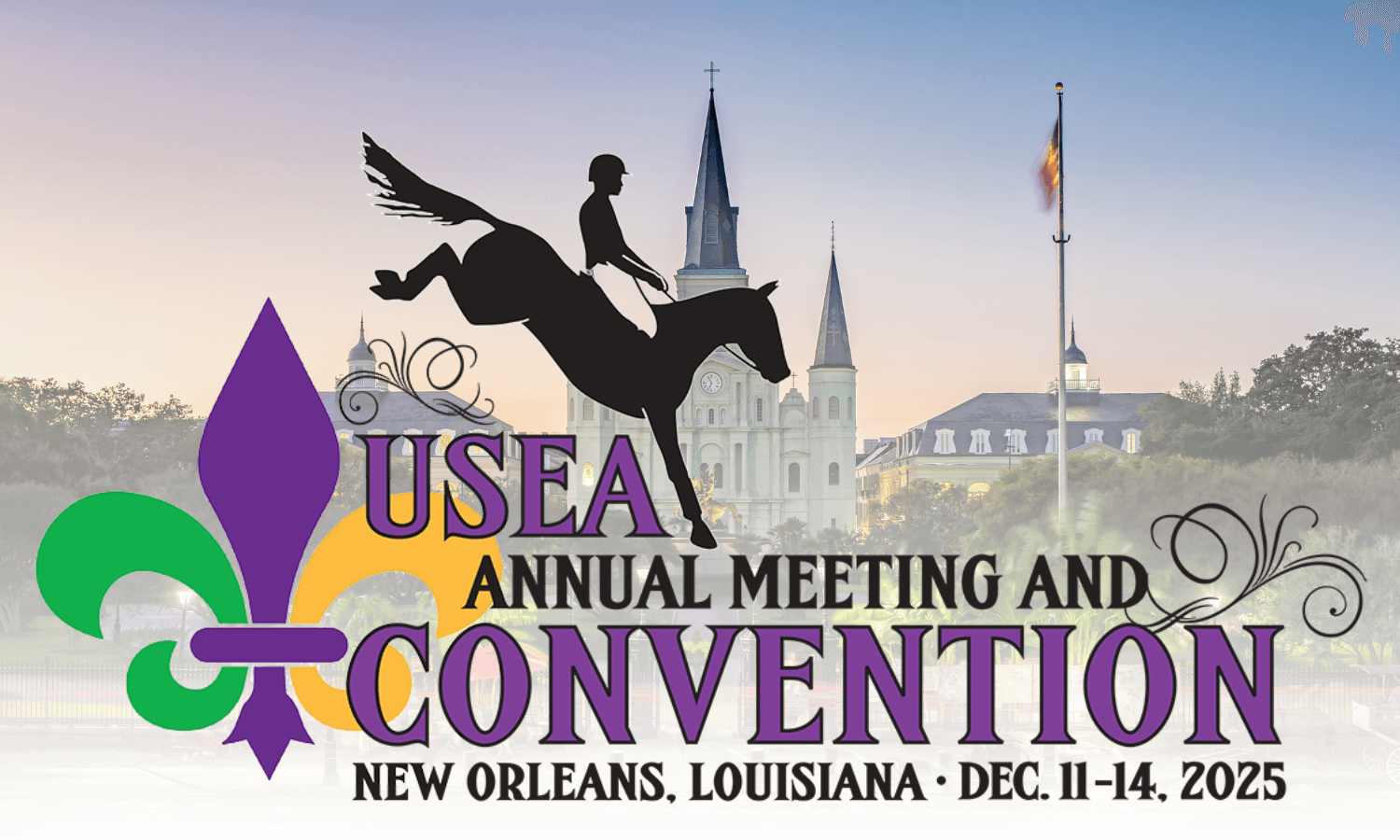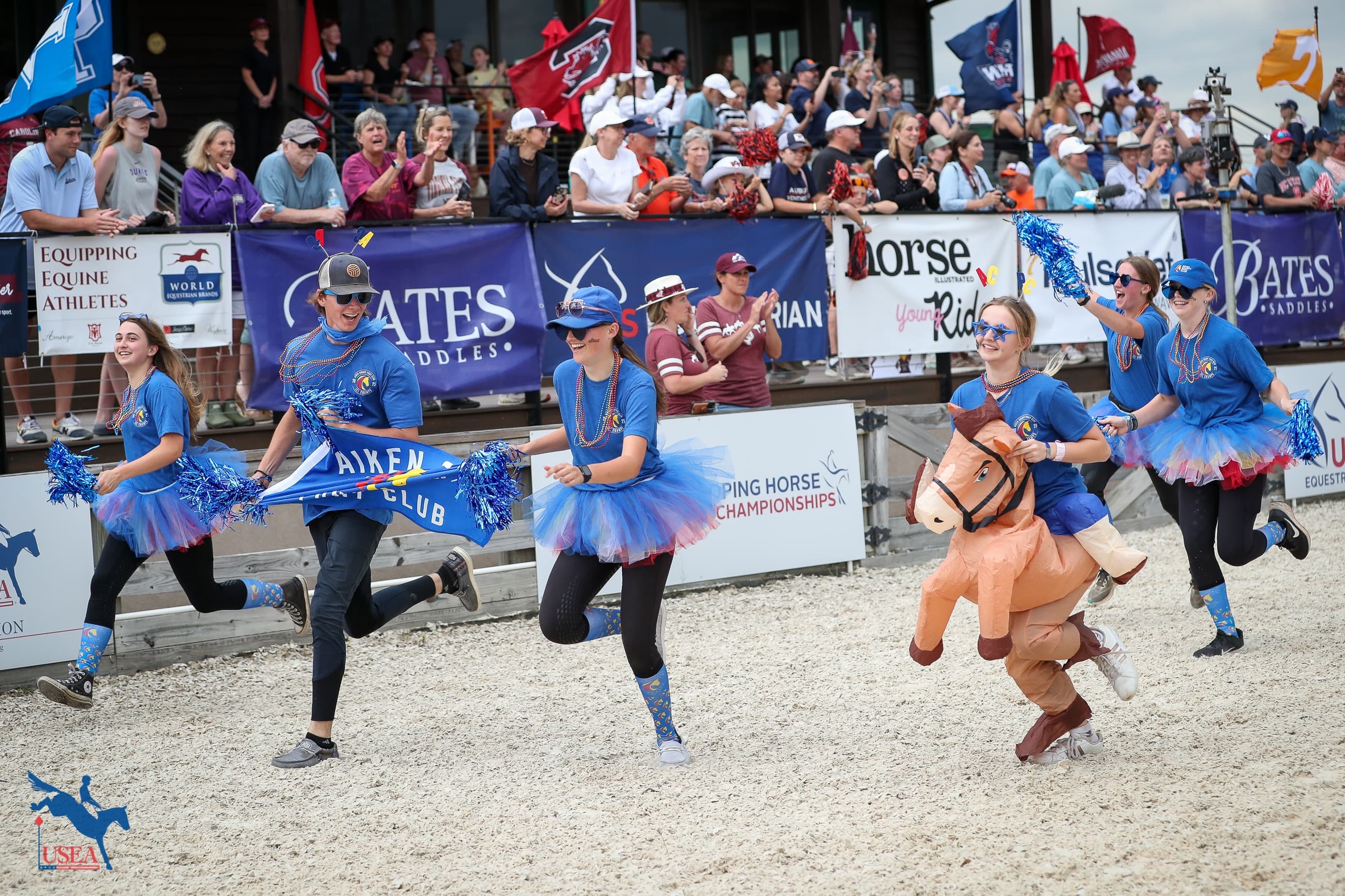Rule Refresher: The Cross-Country Test

The cross-country test is what sets eventing apart as a sport. Horses and riders ride across the country, demonstrating “speed, endurance, and jumping ability” while negotiating obstacles including banks, ditches, and water. Penalties accrued during this phase are added to the penalty score carried forward from dressage.
Prepare yourself for the cross-country test by reviewing the rules specific to cross-country. Text has been taken directly from the USEF Rules for Eventing with emphasis added by the USEA.
EV137 Cross-Country Test
1. This test is to prove the speed, endurance and jumping ability of the true cross-country horse when it is well trained and conditioned. At the same time it demonstrates the competitor’s knowledge of pace and the use of his horse across country.
2. It consists of a cross-country course with obstacles, normally carried out at the gallop.
EV138 Cross-Country Rules
1. STARTING:
a. Competitors at the start must be under the control of a starter. The horse does not have to stand absolutely immobile, but the competitor must not get any advantage from a flying start. Each competitor should be given reasonable warning before the time he is due to start, but it is the competitor’s responsibility to ensure that he starts at the correct time.
b. In order to simplify the task of the starter, an enclosure approximately 5 X 5 meters (16 X 16 feet) will be built at the start with an open front through which horses will start and a gap in one or both sides through which horses may enter. Each competitor must start from within the enclosure and is at liberty to move around and through the enclosure as he pleases. An attendant may lead the horse into the enclosure, and may hold the horse until the signal to start is given. From that instant, the competitor is considered to be on course and no further assistance may be given (see EV138.8).
c. If a competitor starts early, his time will be recorded from the moment he crossed the start line.
d. Under exceptional circumstances, the Ground Jury may permit a competitor to start at other than his posted start time. When this happens, the new, agreed upon start time will become the competitor’s official revised start time.
e. If a competitor is not ready to start at his correct time (original or revised schedule), he may be allowed, at the discretion of the starter, to start when he is ready, subject to the following conditions:
- A late competitor will not be permitted to start if there is any risk of interfering with the subsequent competitor.
- His starting time will be recorded as if he had started at the correct time.
2. TIME.
a. Optimum Time—The distance divided by the designated speed gives the optimum time. Completing the course in less than the optimum time results in zero time penalties. A competitor exceeding the optimum time will be penalized in accordance with EV141.2.a. Time is counted in whole seconds, parts of a second counting as the next whole second (e.g. 30.25 seconds is recorded as 31 seconds.)
b. Speed Fault Time—For the Beginner Novice, Novice, and Training Levels, the distance divided by the speed fault speed gives the speed fault time. Completing the course in less than the optimum time is not penalized up to the speed fault time. Completing the course in less than the speed fault time will be penalized in accordance with EV141.2.b. Time is counted in whole seconds, parts of a second counting as the next whole second (e.g. 30.25 seconds is recorded as 31 seconds.)
c. Time Limit—The time limit is twice the optimum time.
A competitor exceeding the time limit will be eliminated.
d. Timing - Time is counted from the instant the starter gives the signal until the instant when the mounted horse reaches the finishing line. Time is counted in whole seconds, parts of a second counting as the next whole second (e.g. 30.25 seconds is recorded as 31 seconds). When an electronic timer is used for the start, the starter must cut the beam with his hand.
3. ERRORS OF COURSE. All compulsory passages and all obstacles, including all elements and/or options, must be passed or jumped in order, under penalty of elimination. All red and white flags must be respected wherever they occur on the course, under penalty of elimination, except as provided for in EV142.5. Retaking an obstacle already jumped is forbidden, under penalty of elimination, except as provided for in EV142.5.
4. PACE AND DISMOUNTING. Between the start and finish, competitors are free to choose their own pace. They must be mounted to pass all red and white boundary flags. Dismounting as a result of attempting an obstacle, whether voluntary or not, is penalized in accordance with EV141.1.b. Elsewhere on the course, competitors may dismount without incurring a fault, other than possible penalties for exceeding the optimum time.
5. OVERTAKING.
a. Any competitor who is about to be overtaken by a following competitor must quickly clear the way. Any competitor overtaking another competitor must do so only at a safe and suitable place.
b. When the leading competitor is before an obstacle and about to be overtaken, he must follow the directions of the officials. When the leading competitor is committed to jumping an obstacle, the following competitor may jump that obstacle only in such a way that will cause no inconvenience or danger for either.
c. The penalty for willful obstruction of an overtaking competitor, failure to follow the instructions of the officials, or causing danger to another competitor is elimination at the discretion of the Ground Jury.
6. COMPETITORS IN DIFFICULTY. If, in attempting to negotiate an obstacle, a horse should be trapped in such a way it is unable to proceed without assistance, the horse shall be retired from competition and the score posted as a mandatory retirement.
7. STOPPING COMPETITORS.
a. If any part of an obstacle is obstructed by a competitor in difficulty, if any obstacle has been dismantled to release a fallen horse, if an obstacle has been broken and has not yet been rebuilt, or in any similar circumstances, subsequent competitors must be halted.
b. In such a case, an official should be posted in the path of the oncoming competitor. He shall wave a red flag, which indicates that the competitor must stop. Failure to stop is penalized by elimination at the discretion of the Ground Jury.
c. Competitors may be stopped at obstacles or at stopping points on the course.
d. The official will stop competitors only upon the instructions of the control center, or during a rapidly developing emergency at his own obstacle.
e. The time during which the competitor was stopped, from the moment he passed the stopping point until he repassed the same point after being given the order to restart, will be recorded. It will be deducted from the total time taken by the competitor to complete the course. It is clearly intended that the time shall be taken as the competitor gallops past the stopping point, not after he halts nor after a start from the halt.
8. UNAUTHORIZED ASSISTANCE.
a. Any intervention by a third party, whether solicited or not, with the object of facilitating the task of the competitor or of helping his horse, is considered unauthorized assistance and the competitor is liable to be eliminated.
b. In particular, the following are forbidden:
- Intentionally to join another competitor and to continue the course in company with him;
- To be followed, preceded or accompanied, on any part of the course by any vehicle, bicycle, pedestrian, or horseman not in the competition;
- To post friends at certain points to call directions or make signals in passing;
- To have someone at an obstacle to encourage the horse by any means whatsoever;
- To tamper with the obstacles or any part of the course, including, for instance, flags, indicators, markers, notices, ropes, trees, branches, wire or fences, whether temporary or permanent.
c. Officials or spectators who draw the attention of a competitor to a deviation from the course are giving unauthorized assistance which may result in the elimination of the competitor.
d. Each case of unauthorized assistance will be decided by the Ground Jury.
9. AUTHORIZED ASSISTANCE.
a. Whip, headgear, or spectacles may be handed to a competitor at any time.
b. A competitor may receive clarification of jumping penalties from an obstacle judge, e.g. after jumping a flag at a corner, the judge may clarify whether it was a run-out or not.
10. AFTER ELIMINATION. A competitor eliminated or retired for any reason must leave the course at once and has no right to continue. If he does not stop at once and it can be established beyond a reasonable doubt that he should be eliminated or retired, he should be stopped as soon as possible and reported to the ground jury. A competitor must walk his horse off the course either mounted or dismounted. Violators shall be warned or fined up to $100. (payable to the Organizing Committee), at the discretion of the Ground Jury.
Want to catch up on past rule refreshers? Click here.














